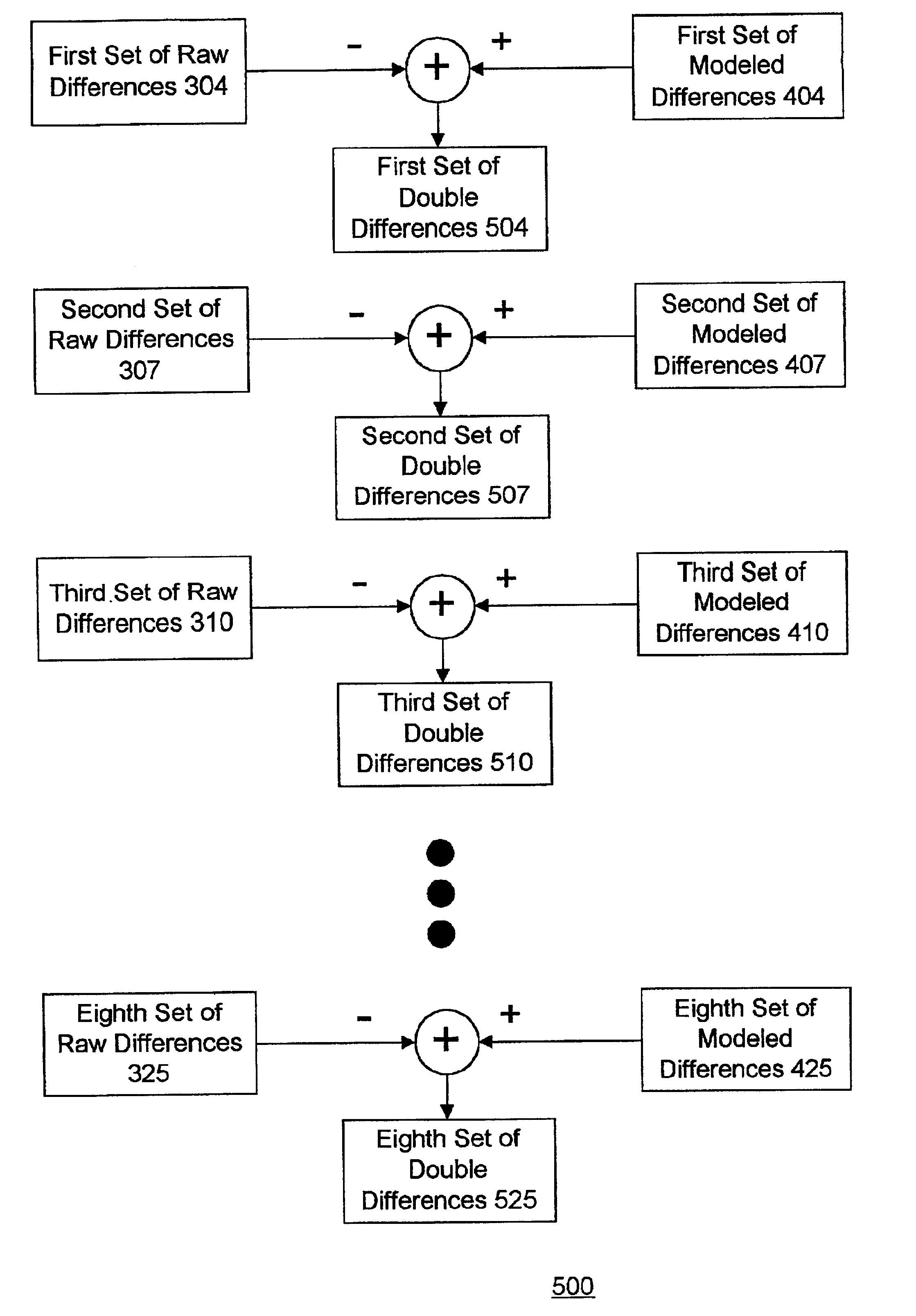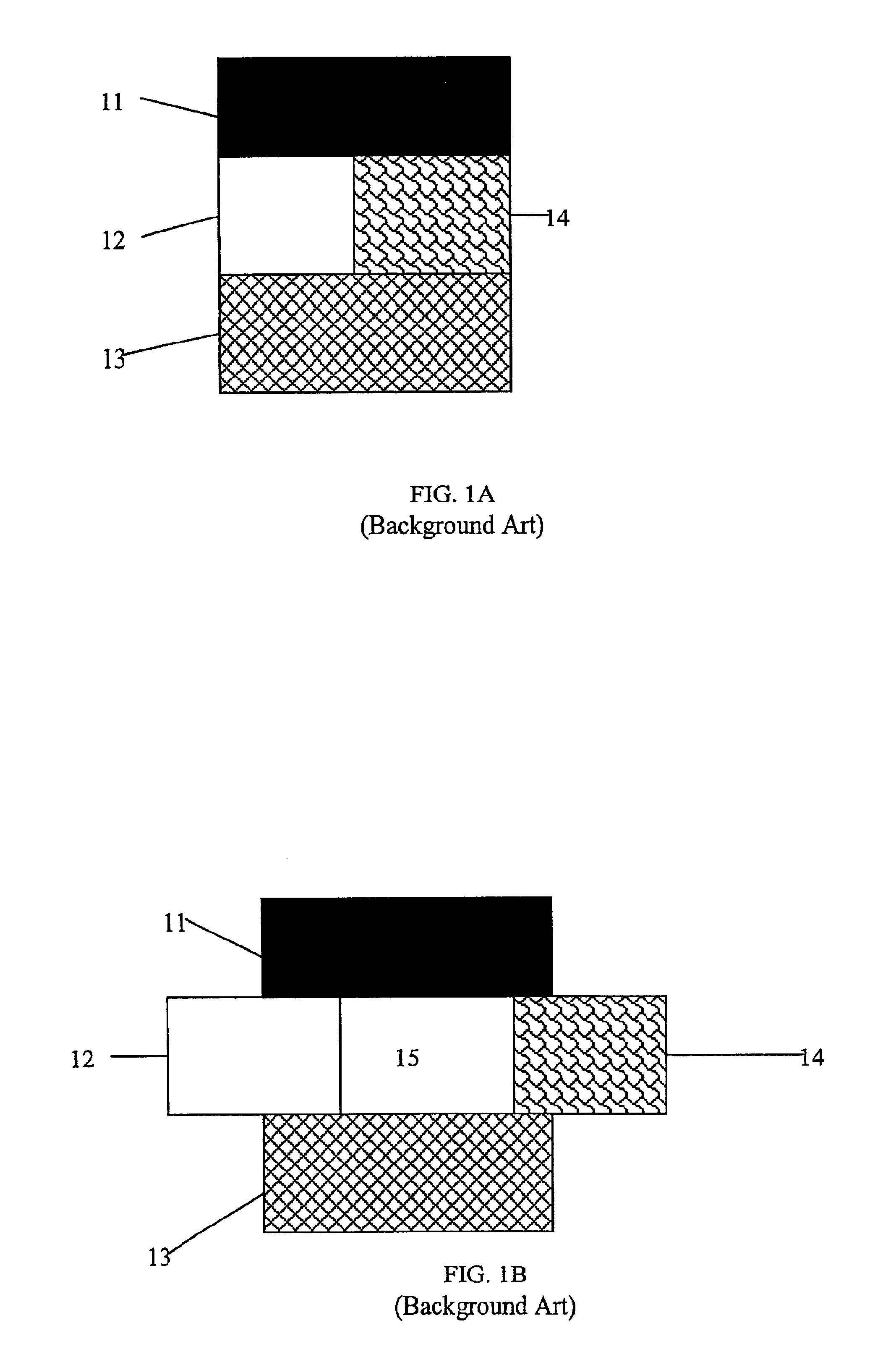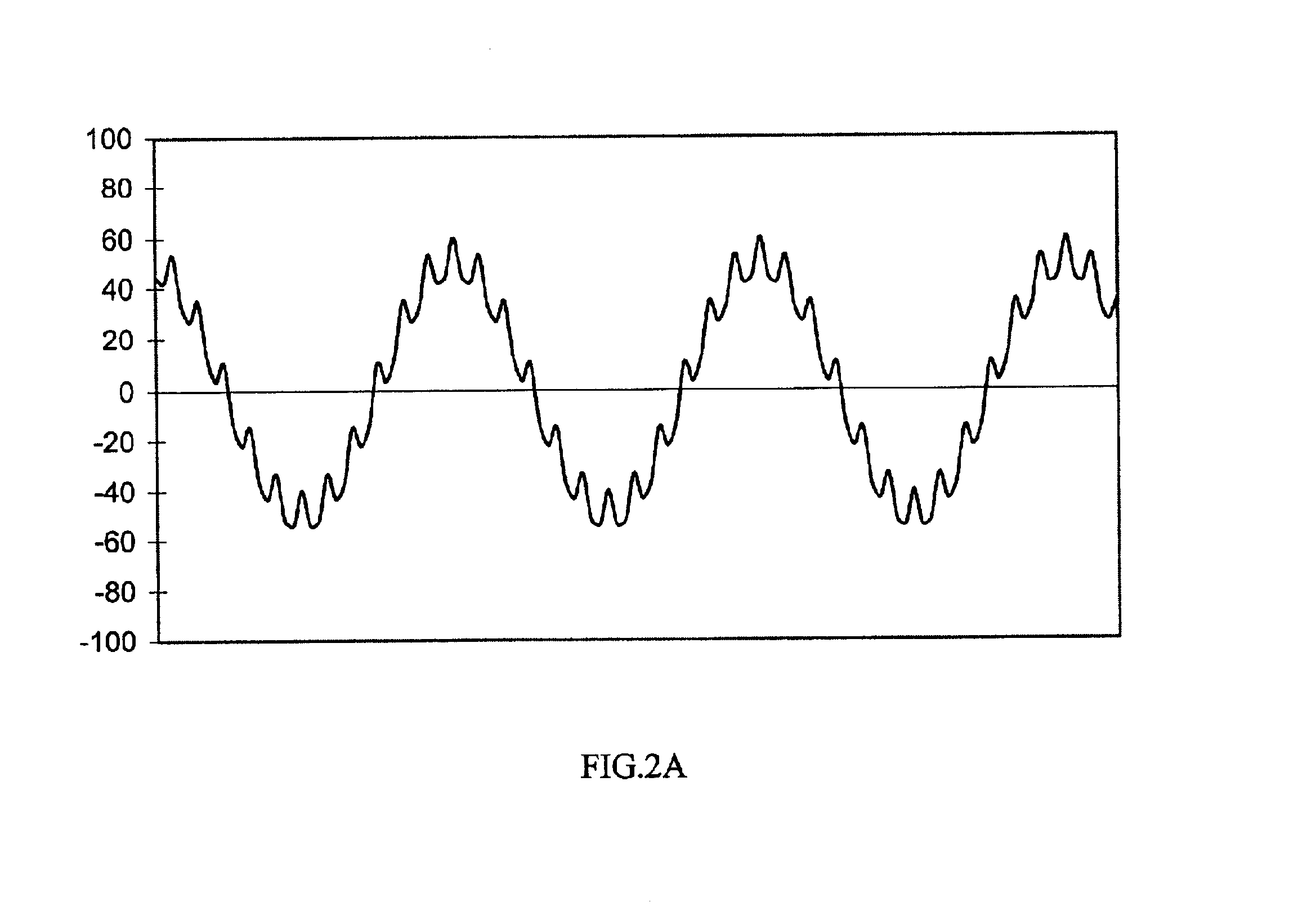Efficiently adaptive double pyramidal coding
a double pyramidal, adaptive technology, applied in the field of communication, can solve the problems of inefficient conventional way of dealing with newly discovered regions, particularly vexing problems for motion picture data, video data,
- Summary
- Abstract
- Description
- Claims
- Application Information
AI Technical Summary
Benefits of technology
Problems solved by technology
Method used
Image
Examples
Embodiment Construction
FIG. 3 depicts a forward transform of an image region with raw data in accordance with an embodiment of the invention. The transform 300 may operate on a region of an image. For example, the region may comprise an image block or an image segment.
The specific forward transform 300 in FIG. 3 includes eight levels of transformation. If the down sampling in each level is by a factor of two, then having eight levels results in a reduction in pixels by a factor of 256 (28). Square regions of 256 (16×16) pixels or less may be reduced to a single average pixel by such an eight-level transform 300. In one specific embodiment, the regions are such that they generally fit within such a 16×16 block, so that the result of the eight-level transform 300 is a single average pixel. However, transforms with other numbers of levels of transformation are also contemplated to be within the scope of this invention. For example, a four-level transform may reduce regions that fit within an 4×4 square into ...
PUM
 Login to View More
Login to View More Abstract
Description
Claims
Application Information
 Login to View More
Login to View More - R&D
- Intellectual Property
- Life Sciences
- Materials
- Tech Scout
- Unparalleled Data Quality
- Higher Quality Content
- 60% Fewer Hallucinations
Browse by: Latest US Patents, China's latest patents, Technical Efficacy Thesaurus, Application Domain, Technology Topic, Popular Technical Reports.
© 2025 PatSnap. All rights reserved.Legal|Privacy policy|Modern Slavery Act Transparency Statement|Sitemap|About US| Contact US: help@patsnap.com



